13.3 Atmospheric and aquatic transport eventually move pollutants around the planet
transboundary pollution The transport of pollutants by wind and water around the biosphere, across geographical and political borders.
While the concentrations of pollutants in local areas can build up to very high levels (see introduction, page 386), those pollutants won’t necessarily stay in place. Wind and water transport pollutants around the biosphere, crossing geographical and political borders—
Atmospheric Circulation
The atmosphere and the oceans are circulating constantly and redistributing material, including pollutants, throughout the biosphere (see Figure 8.2, page 232). The 1991 eruption of Mount Pinatubo in the Philippines, for example, provided an unprecedented opportunity to study the dispersal of materials by atmospheric circulation. There had been much larger volcanic eruptions within historic times, but never before had there been satellites in place equipped with sensors that could document the spread of materials injected into the atmosphere by the eruption. Mount Pinatubo injected approximately 20 million metric tons of SO2 into the stratosphere, which were gradually converted chemically into 30 million metric tons of sulfuric acid and water aerosols.
aerosol Tiny particles of solid or liquid material suspended in air or other gas.
An aerosol consists of tiny particles of solid material or tiny liquid droplets suspended in air or other gas. In the case of the stratospheric aerosols resulting from the Pinatubo eruption, the droplets were made up of a mixture of sulfuric acid and water. These aerosols were initially confined to a tropical band encircling Earth, but they spread through the stratosphere over a period of two years (Figure 13.9). Gradually, atmospheric circulation and gravity removed these acidic aerosols from the stratosphere into the troposphere (the lower atmosphere) and to the surface of Earth.
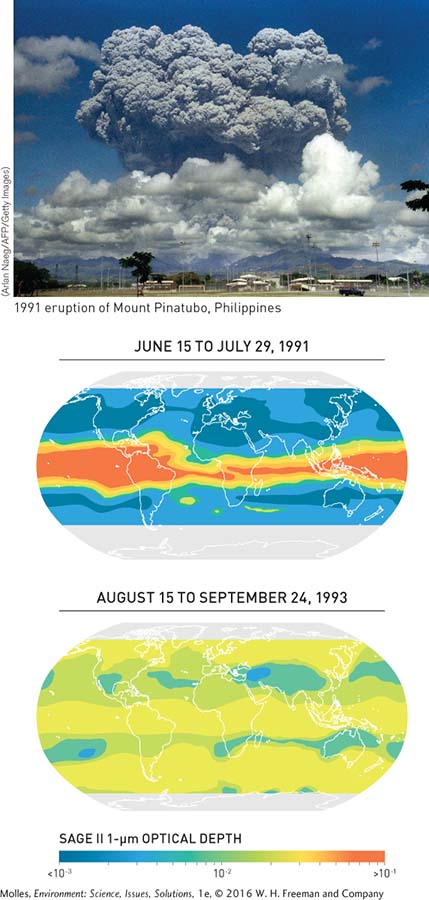
Pollutants emitted into the lower atmosphere are also widely dispersed across Earth. During his voyage on the H.M.S. Beagle, Charles Darwin noted the fallout of sand and dust on the ship far out in the North Atlantic Ocean off North Africa. Despite the ship’s great distance from Africa, he inferred that the material was being blown by prevailing winds from the Sahara Desert. We know now that Darwin was correct and that, in fact, dust is transported from the Sahara Desert all the way across the Atlantic to the Amazon River Basin (Figure 13.10). The atmosphere can also transport other pollutants long distances. For example, ozone and mercury produced by the burning of coal in China are deposited across North America.
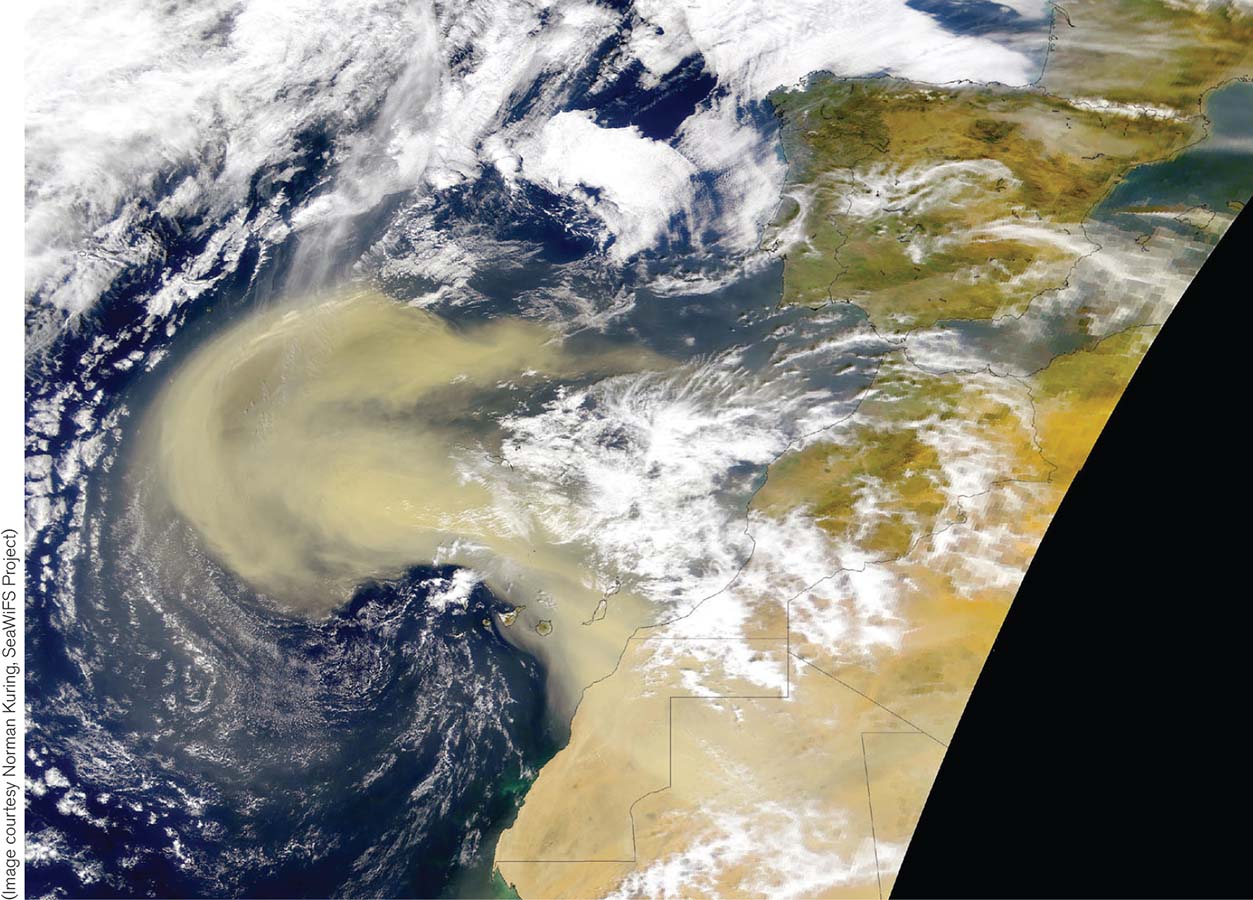
Oceanic Transport

How have satellites changed the contributions of imagination versus measurement in studies of large-
The 2011 nuclear accident at Fukushima, Japan, provided dramatic evidence of oceanic transport. The tsunami that disabled the Fukushima nuclear power plant caused immense destruction of property and much of the debris created by the tsunami was dragged out to sea with the receding water. The massive collection of debris, which contained whole ships and largely intact houses, was transported with oceanic currents across the Pacific Ocean to the coasts of Canada and the United States (Figure 13.11).
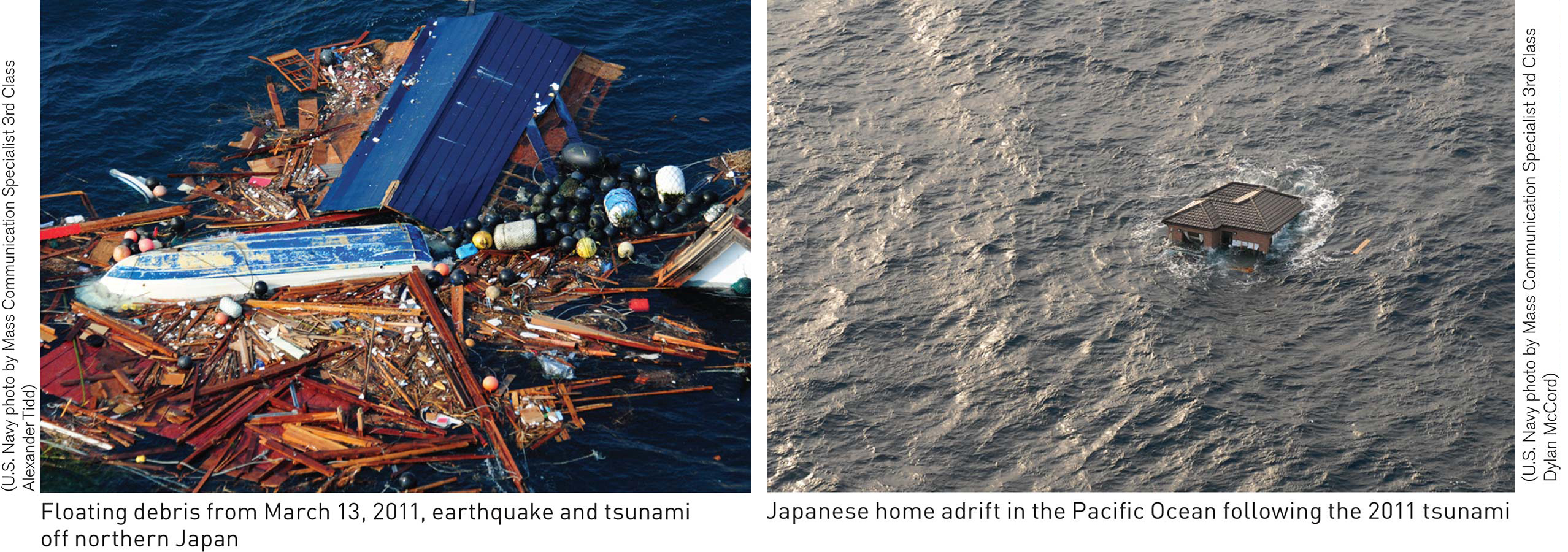

Given what we now know about atmospheric and oceanic transport, are the concepts of local, regional, and global pollution still useful?
Pollutants can also be transported across the oceans with the help of organisms. For example, radioactive isotopes leaked during the nuclear accident at Fukushima were found in juvenile bluefin tuna caught off the California coast approximately 1 year later (Figure 13.12). These young tuna had taken up radioactive cesium-
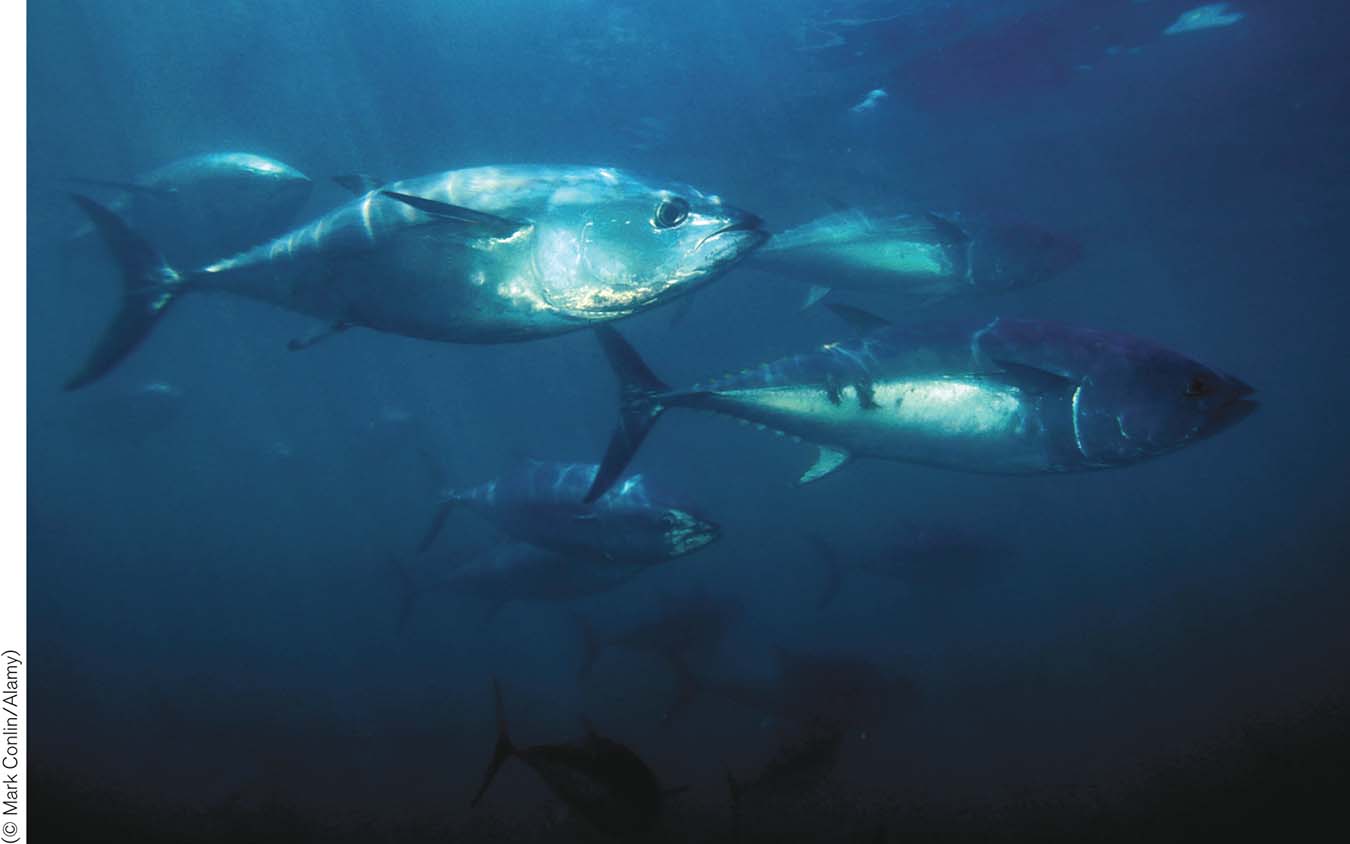
Watersheds
watershed (catchment, drainage basin) The land area from which an aquifer or river system acquires its water; also defined as the dividing line between catchments or drainage basins.
Surface water and groundwater carry pollutants. A watershed, also known as a drainage basin or catchment, is the land area drained by a water system, such as the Chesapeake Bay watershed (Figure 13.13). Precipitation in a watershed has several potential fates. Some precipitation immediately evaporates and returns to the atmosphere as water vapor. A portion runs off the land as surface flow, eventually entering waterways, ranging from small streams to rivers. Some precipitation infiltrates into the soil, where it may be taken up by terrestrial plants and stored as tissue moisture or transpired as water vapor back into the atmosphere. Yet another fraction of the precipitation, which soaks into the ground, becomes groundwater (see Chapter 6, page 159). Flows of surface water and groundwater determine where the pollutants will move and, as shown by the map of the Chesapeake Bay watershed, these flows often cross political boundaries.
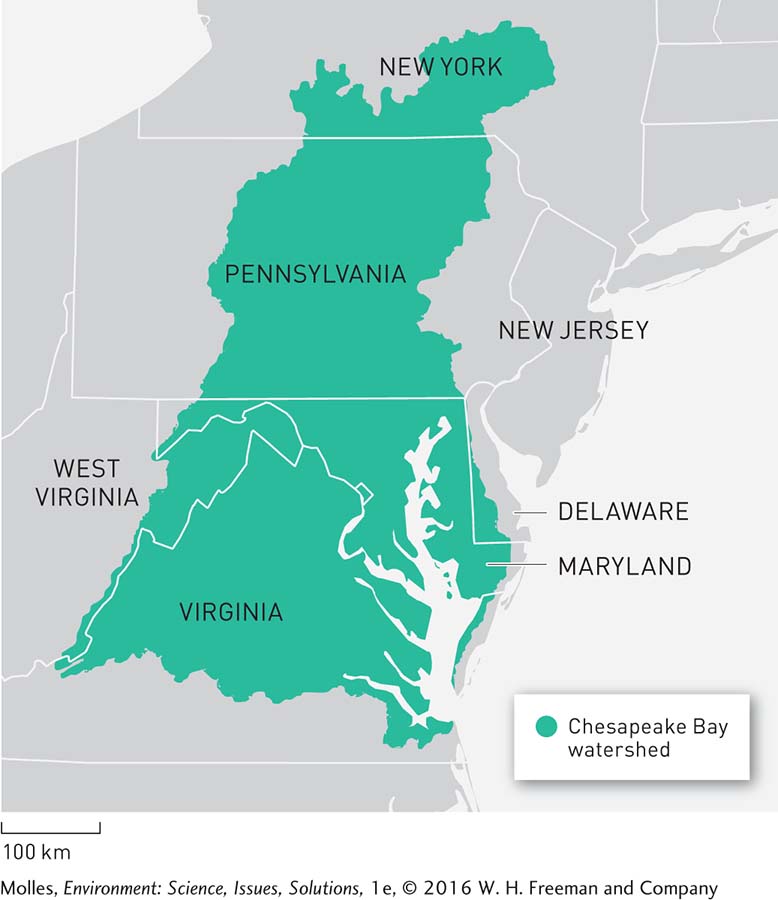
Airsheds
airshed A concept equivalent to a watershed or drainage basin but related to movements of air rather than water; typically behaves in an orderly way, thus can be used to track and manage air pollution.
The concept of an airshed is similar to a watershed but related to movements of air rather than water. We define an airshed as a part of the atmosphere that has a consistent airflow, primarily due to the location of mountains and prevailing wind patterns. Since the air mass within an airshed typically behaves in a united and orderly way, a focus on airsheds can be used to track and manage air pollution. Figure 13.14 shows the airshed for the deposition of nitrogen oxides in the Chesapeake Bay, along with its watershed. Because it is less confined, the airshed is generally much larger than the watershed.
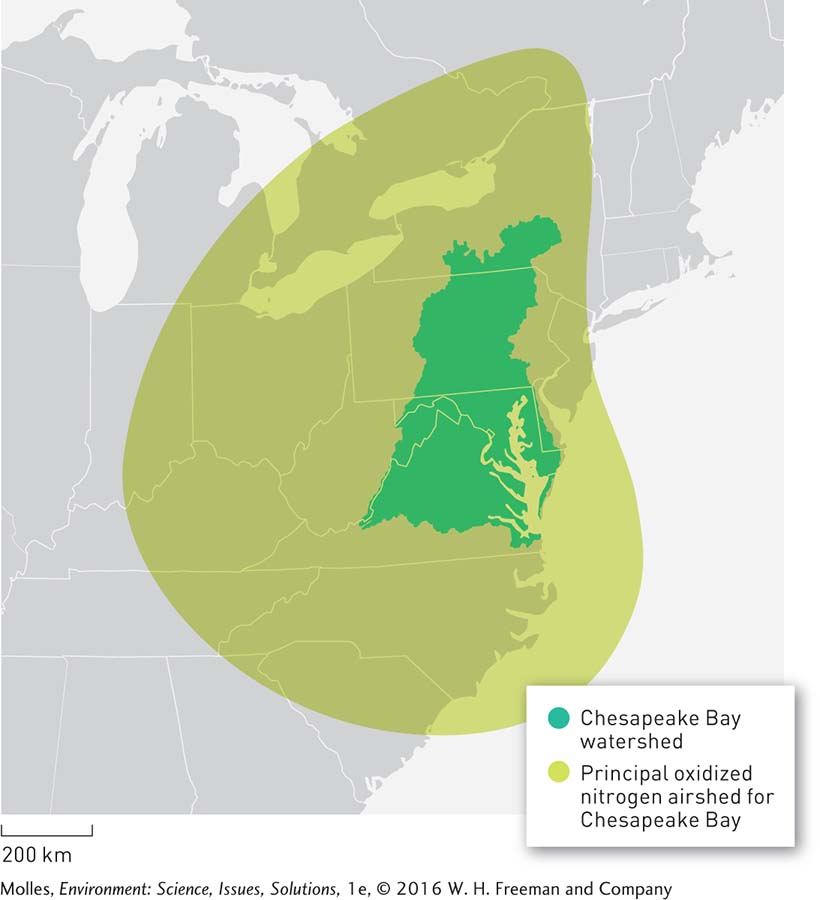
The large area of airsheds has significant consequences for managing pollution. For example, in December 2013, eight Mid-
Think About It
How are atmospheric and oceanic transport linked physically?
How are watersheds and airsheds similar? In what ways do they differ?
In the United States, does it make more sense, environmentally, to regulate pollution at the state level or at the scale of watersheds and airsheds? Explain.
13.1–13.3 Science: Summary
Pollution is contamination of the environment by substances or physical conditions, such as noise or light, at levels harmful to living organisms. Sources of pollution are generally divided into point and nonpoint sources. Some pollutants, called primary pollutants, are harmful in the form in which they are released into the environment, while other substances, called secondary pollutants, are harmful following chemical reactions in the environment. The EPA has singled out a few significant air pollutants, called criteria pollutants, for monitoring and management. Heavy metals can be a significant source of soil and water pollution. Excessive additions of organic matter to aquatic ecosystems will increase biochemical oxygen demand. Additions of excessive nutrients lead to eutrophication. Movements of air, water, and organisms move pollutants around the biosphere. Surface and groundwater flows are avenues for the dispersal of pollutants within watersheds. Airsheds can be used to track and manage regional air pollution.